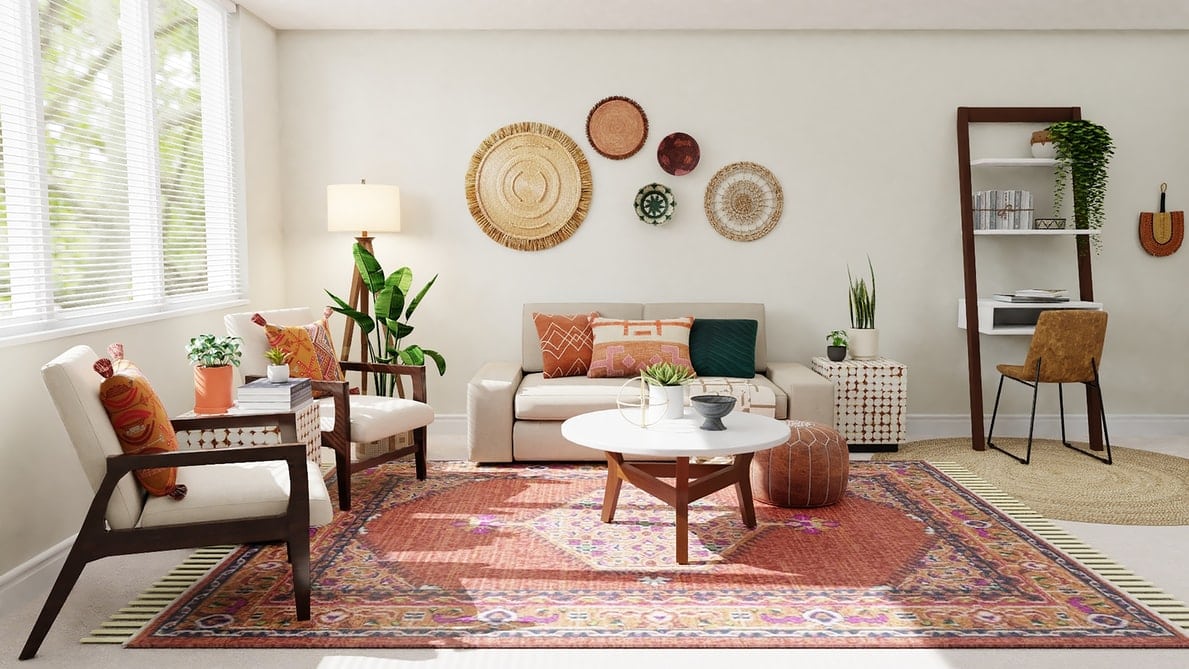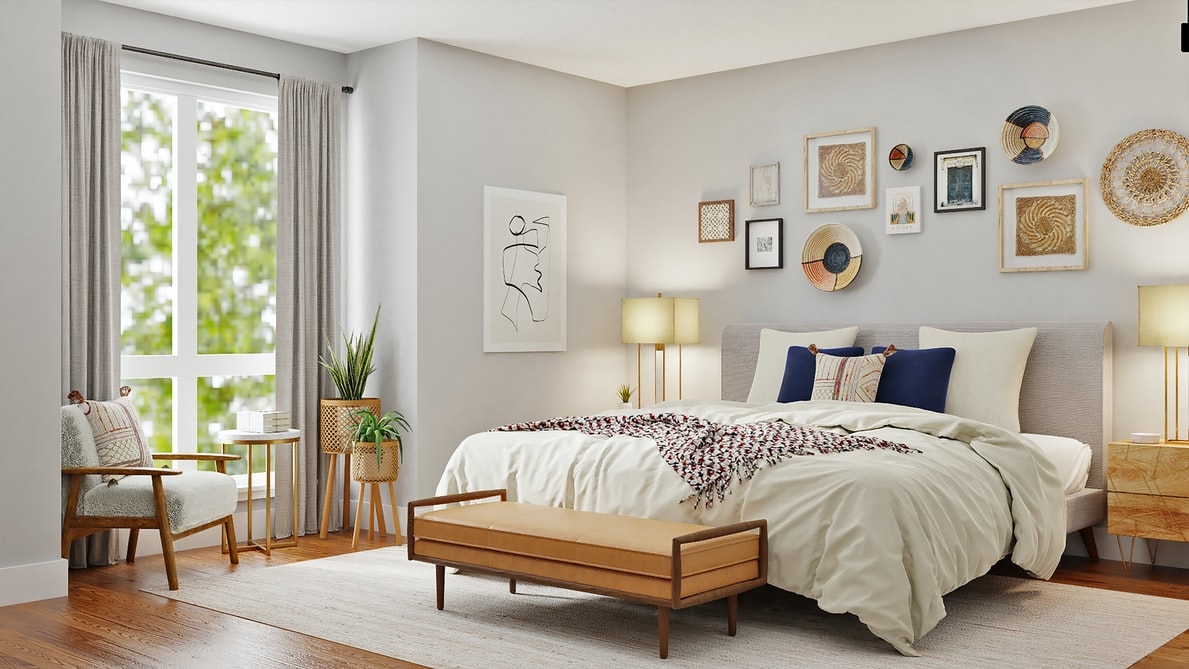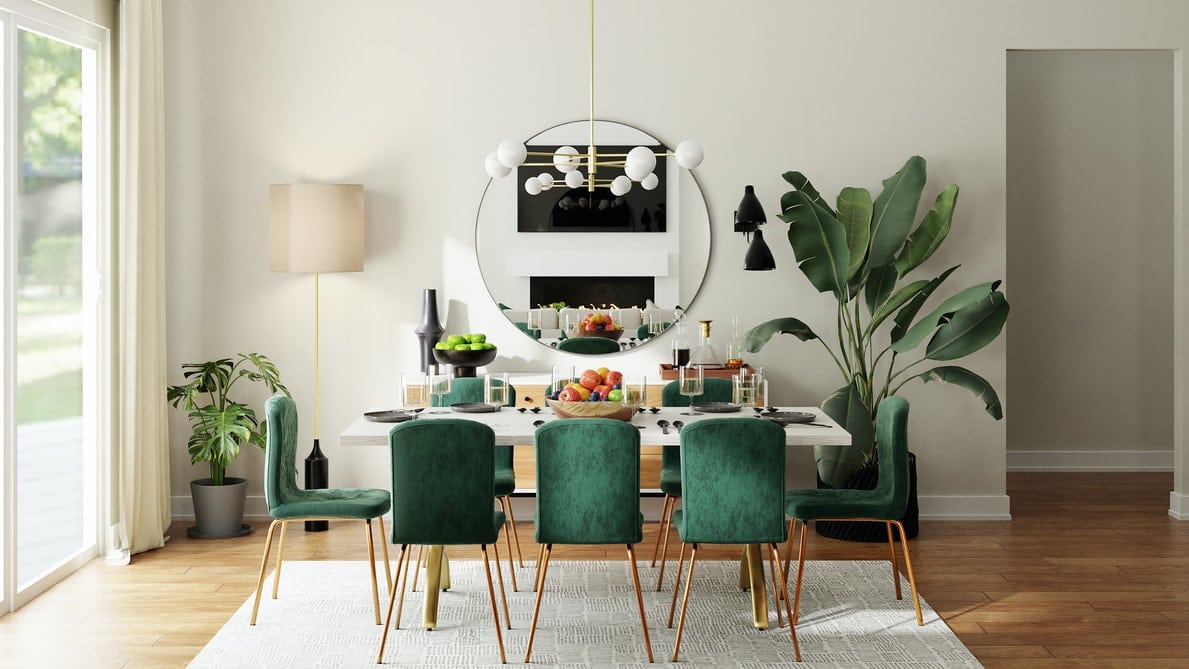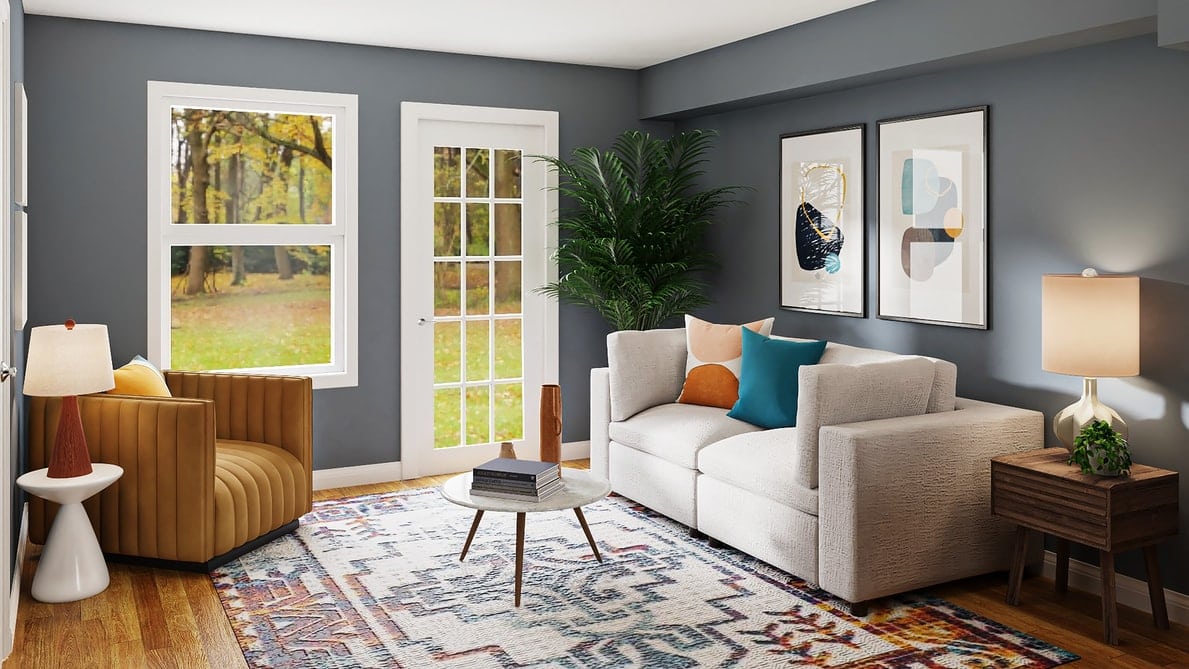If you’re looking to try your hand at tackling a full-scale remodel or are looking for ways to give your home a minor revamp, e-design may be the route for you. For starters, e-design is an excellent option for DIY-savvy homeowners or those who like to be hands-on during the design process. Plus, for those working on a budget, e-design provides an affordable alternative to co-create your own space with the guidance of a professional. Before you dive right into your next home project, we reached out to design experts from Charlotte, NC, all the way to Syracuse, NY, to get their best tips to keep in mind when working with an e-designer.

1) It’s never too early to start looking for an e-designer
Start looking for an e-designer early in the process. Whether you’re purchasing your dream home, an investment property, or renovating your home, working with a designer early on will help save many headaches down the road. –Brass & Brick Interior Design
There are many e-designers out there. To ensure the best possible design fit, always check out social media sites such as their Instagram. If you love their vibe and look, that should give you confidence that your project will look just as incredible. –Third + Windsor Interior Design
2) Be upfront and honest when working with an e-designer
A large part of design is subjective and based on your specific taste, so being honest about what pieces and styles you dislike is just as useful as sharing what you love. One of the easiest ways for me to learn what you love is by knowing what you hate. –Bowen Richards
Share your expectations for what would constitute a successful undertaking for the project at the onset. Understand e-design is inherently different than interior design or home decorating. This will help your e-designer correctly advise you on the deliverables of their services to match your expectations and budget as closely as possible. –8TFive Studio
3) Have a realistic budget
Come prepared with a realistic budget and be prepared to adjust accordingly to avoid an uncomfortable conversation at the end. You get what you pay for, and quality furnishings cost money. A good trick for setting a realistic budget is when searching for those inspiration pictures, note what your dream piece(s) of furniture cost. This way, you have an idea of what furniture in the market costs and can adjust your budget or criteria accordingly. Your e-designer may be able to source items at a trade discount but only when they are available. So, avoid sticker shock later by being well-informed. –Designs By Damienne
No matter how big or small your budget is, it is important that you think about how much you are willing and able to spend. Having a clear budget at the start of your project will help your e-designer be more strategic and make better decisions when selecting and sourcing products. –Stilos Interior Design

4) Come prepared with a vision board
Provide as much information as possible upfront. This will cut down on the back and forth, reducing the time your designer needs to spend gathering all the important details (which can translate into you spending less on the design). Share Pinterest boards, Instagram accounts you like, art you have saved on Etsy, and any existing furniture you want to incorporate into the design. Be sure to send room dimensions and include window sizes and ceiling height. –Virtual Design Assistant
Go above and beyond for your e-designer and create a Pinterest board for your virtual space. Pinterest is a great tool to use and show your e-designer what your style may be like. Your e-designer will be able to dissect similarities in all your pins and help decipher your personal style. –Orange Grove Design
A picture is worth a thousand words and this old saying is also true when it comes to virtual design. Select a set of images and use them to communicate to your e-designer your preferences and what aspects you like about them. It could be the colors, style, mood, finishes, materials, or even the lighting in the room. –Distinctive Design Studio
5) Always triple check your measurements
Correct measurements of your project are so important. These numbers are used in our space planning process where we determine the appropriate scale for everything from furnishings to appliances. –Harmonious Interiors by Tiffini
Check your measurements three times. Twice before sending the measurements to me and then once more before ordering the furniture from your shopping list. By using this method, we almost always catch errors early on in the design process, so there’s no confusion by the end. –Erin Davis Design

6) Be ready for a little DIY
E-design is built for DIYers. Our clients receive a list of curated products to purchase, beautiful paint colors to use, and helpful tips and tricks in a how-to guide to create their space. They are assisted by a custom floorplan for furniture and accessory placement, as well as contact with their designer for more help if needed. –Regan Chappell Interiors
7) You’ll still have a collaborative experience with your e-designer
You’re still working with a designer – it’s just a different format. Since e-design happens online, a lot of folks think that makes it impersonal, but I’m glad to share that it’s not. My client onboarding process helps me get to know the client’s needs and desires, and throughout the design phase, our relationship grows through our conversations in my client portal. I also offer video consultations, which definitely adds more of a personal element to it. –Mix & Match Design
It’s possible to get a full-service experience from working with a designer virtually. From measurements to custom furniture pieces, there really isn’t anything that can’t be done virtually these days. If you find a designer you love, but lives far away, it is still possible to work with them. –Ettie & Co
Given our virtual-centric world, an e-designer can get a good feel and understanding of the space via photos, tours, and information provided by the client. It also makes it possible to source everything necessary to complete the space via e-commerce. We work together via email, develop a final design, and the client can purchase items and finish it at their own pace. Getting the clients involved in the completion of the design has an extra benefit, whether it’s a recommended DIY project or just placing pieces in the space, they get an added sense of personal accomplishment. –Eclectic Twist

8) Don’t be afraid to provide feedback
Your design revisions are all based on the feedback you give us so try to be as detailed as possible. Are you wanting to see larger-scaled patterns, more natural textures, or metal accents in another finish? What do you love or not love about the product specifically? Feedback is so important to prevent any hard conversations at the end of a project when the design doesn’t match your vision. –Abigail Amira Home
9) You have the flexibility to go at your own pace
E-design gives you the flexibility to implement the design plan created for you. Don’t have several months to dedicate to a remodel? Need help with design direction but feel comfortable implementing on your own? E-design sounds like an excellent option for you. It’s also a great opportunity to work with your favorite designers from all over the country. –Interiors By Katie
E-Design takes traditional design and simplifies the entire process, making it ideal if you’re new to the world of interior design. It allows people to work with a designer without the pressure that clients sometimes feel. –Melissa Joan Vincent Interior Design
10) Last but not least, be yourself
Design styles are not one size fits all, so don’t be afraid to be yourself. Find a style that speaks to you specifically, whether you stick to one style (i.e. Modern) or mix them together to create your own design cocktail (i.e. Modern Coastal, Coastal Cottage, Modern Farmhouse). Your home should be a reflection of yourself, so design it in a way that makes you happy. –Fraiche & Co

 United States
United States Canada
Canada